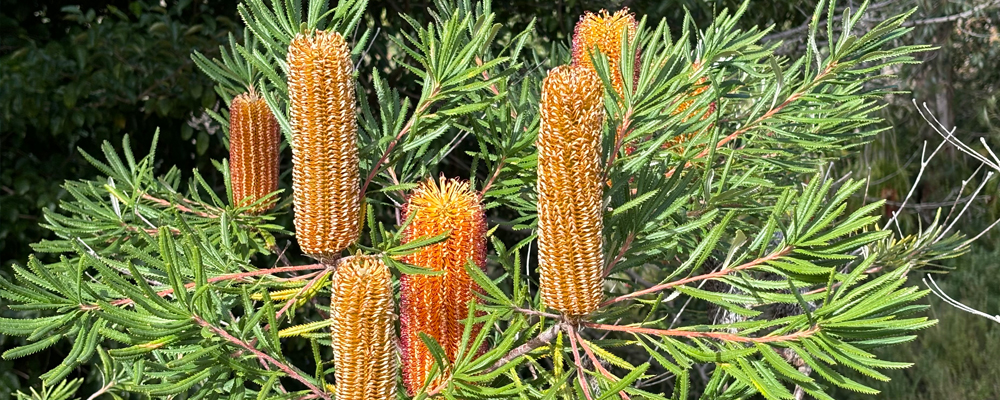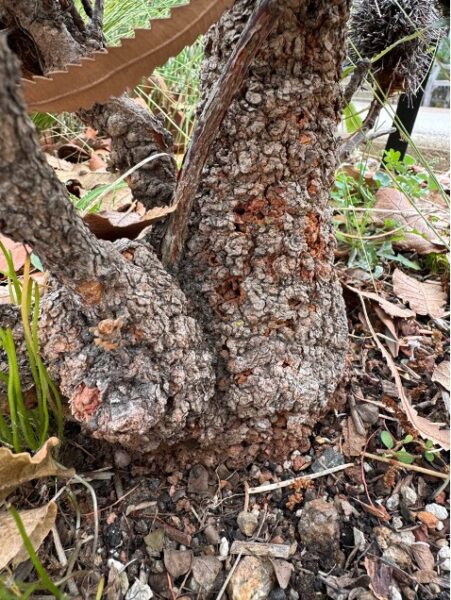
Director Lew Feldman
I’m Glad You Asked:
Lignotubers and Burls
Plants have evolved many strategies to avoid damage due to fires.
An example of one such strategy is the production in many plants, such as in oaks, of an external layer of cork that functions to insulate interior living tissues from periodic, fast-moving grass fires. Another strategy to avoid fire damage is the production of a specialized structure known as a lignotuber, which is a swelling at the base of the stem enclosing dormant buds. Fire damage to the shoot systems stimulates buds to sprout from the lignotuber enabling the rapid re-establishment of the plants aerial shoot system following fire. This ecological function, and the widespread occurrence of lignotuber-bearing plants in Mediterranean-type plant communities is well-documented. Here in the UC Botanical Garden many of our Mediterranean-type plants, especially those from Australia, such as Banksia produce lignotubers.

A lignotuber (swollen base) of a Banksia aemula shrub in the UC Botanical Garden
Next time you visit the UC Botanical Garden take a look at the stem just above the soil surface of our Banksias. About half of the Garden’s Banksia species produce lignotubers.
In California as well, many of our Mediterranean zone plants also produce lignotubers, but we sometimes give them a different name; burls. Burls (lignotubers) occur in many of our native California chaparral shrubs, including, in some species of Arctostaphylos, Ceanothus and Garrya. In California, as in Australia, the evolution and development of lignotubers occurred in environments in which annual, short duration fires occurred, thereby preventing the buildup of flammable matter. Lignotuber structure and function evolved to survive these short, not too intense annual fires. However, by artificially preventing the occurrence of annual fires (a frequent, past practice during the last 150 years), this allowed for the accumulation of considerable flammable materials, resulting in longer, hotter fires and often, therefore, in the destruction of the lignotuber and in the concomitant loss of ecosystem restoration following fires.
The term burl is also applied to woody outgrowths on the base or trunks of coast redwoods. For many of us who may have, as children, “grown” burls, you will recall that eventually many buds (shoots) will sprout from the burl, as in a lignotuber. In redwoods, burls may function to help re-establish a tree if it should fall or otherwise be seriously damaged.
For further reading on lignotubers and burls; S. James (1984) Lignotubers and Burls—their structure, function and ecological significance in Mediterranean ecosystems. The Botanical Review 50, 225-266.
